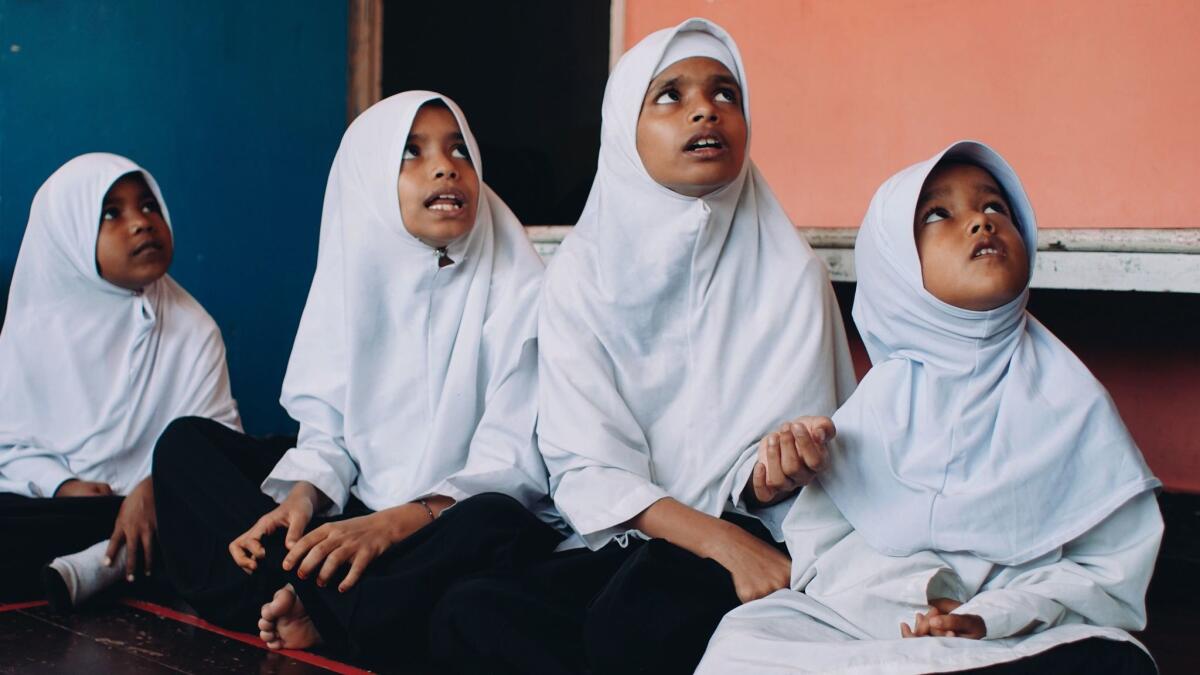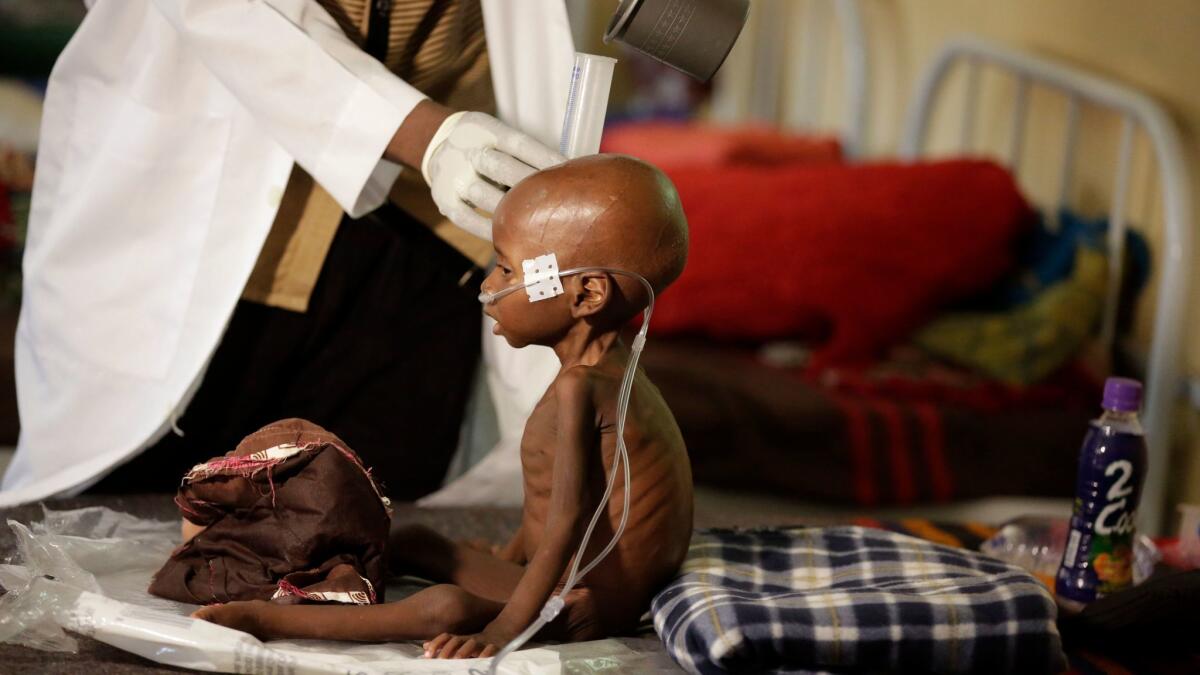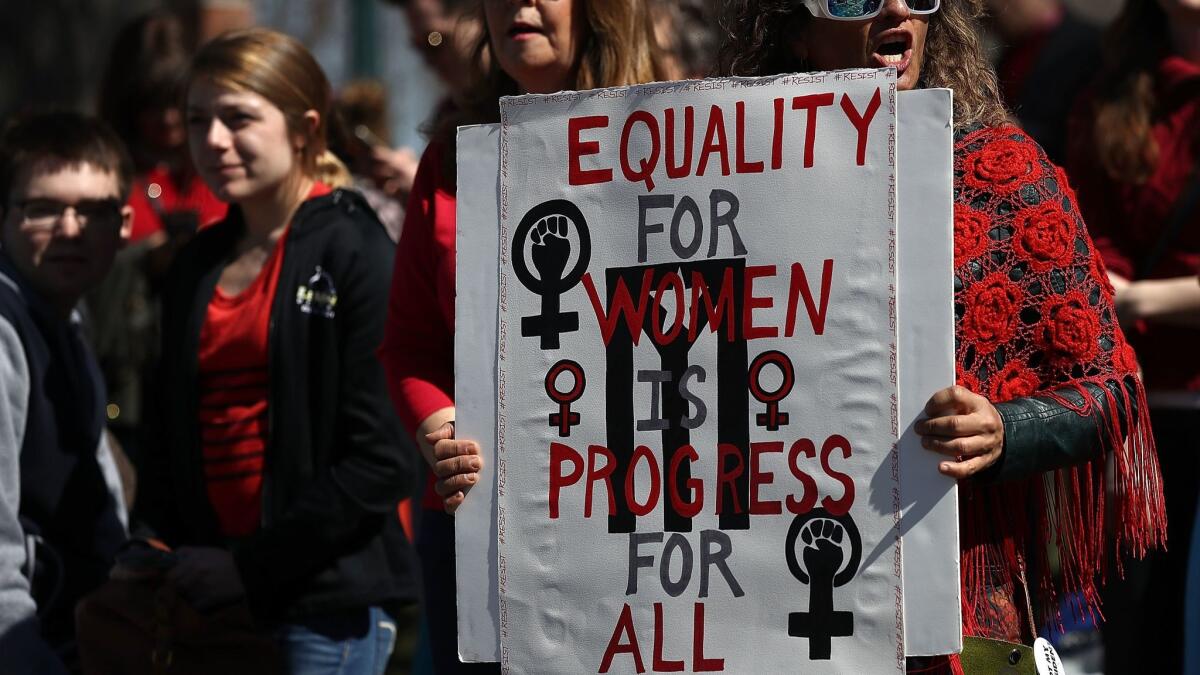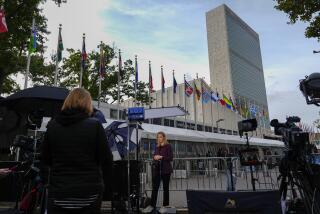The state of the world? Every day, 800 million people go to bed hungry, the U.N. says
With people now living longer, more children attending school and basic social services reaching a larger portion of the world’s population, the development and well-being of humans is quantitatively better today than it was 25 years ago.
But the progress has been uneven and stymied by persistent shortfalls, according to the 2016 Human Development Report released by the United Nations on Tuesday.
Poor, marginalized and vulnerable groups, including women, ethnic minorities, indigenous peoples, refugees, migrants and the disabled are being left the furthest behind, and major institutional reforms are required to address the disparities, according to the report, titled Human Development for Everyone.
“The basic message we are trying to give is that human development will neither be sustained nor be sustainable if half of humanity is bypassed in the development process,” said Selim Jahan, director of the U.N. Development Program’s Human Development Report Office.
Top performers on the Human Development Index, which uses life expectancy, education and per capita income to rank a country’s development progress, were Norway, Australia, Switzerland, Germany, Singapore and Denmark. Burundi, Burkina Faso, Chad, Niger and the Central African Republic placed lowest. The United States tied with Canada in 10th place.

Here are some questions and answers about the report:
What are some of the significant achievements of the last 25 years?
—Even though the world’s population increased by 2 billion — from 5.3 billion in 1990 to 7.3 billion in 2015 — more than 1 billion people escaped extreme poverty.
—Some 2.6 billion people gained access to safe drinking water.
—The death rate among children under 5 was more than halved between 1990 and 2015.
—From 2000 to 2010, life expectancy in sub-Saharan Africa increased by six years, and the region had the fastest growth on the human-development index.
—Cases of HIV, malaria and tuberculosis declined between 2000 and 2015.
—The proportion of seats held by women in parliaments worldwide rose to 23% in 2016 — up six percentage points over the preceding decade.
“Impressive progress has taken place on many fronts of human development and we must celebrate it,” said Jahan, the report’s lead author. “But at the same time, significant deprivations remain.”
What are some of the deficiencies?
—Some 800 million people go to bed hungry every day.

—Eleven children younger than 5 die every minute, mostly from preventable causes such as diarrhea, malaria and neonatal infection.
—Thirty-five women die during childbirth every hour.
—Air pollution kills 18,000 people each day.
—Every minute, an average of 24 people are forcibly displaced from their home. And of the 65 million people who are currently displaced, due to violence, insecurity and natural disasters, most are children.
—Every year, some 15 million girls marry before they turn 18. That’s a girl marrying every two seconds.
—In 18 countries, women must have their spouse’s approval in order to get a job; only 10% to 20% of landowners in developing nations are female, compared with 27% in Europe; and 46 nations do nothing to legally protect women from domestic violence.

—Inequality is rampant. The wealthiest 1% of the world’s population held 46% of the global wealth around 2010.
The shortfalls to human progress vary across nations and hurt some groups more than others, the report says. Women, ethnic minorities, indigenous groups, migrants and the disabled remain the worst off.
Why?
The report blames discrimination, intolerance and social norms that work against the most vulnerable groups such as women, who face bias in a variety of areas, such as employment and land and property rights.
Ethnic minorities are often excluded from education, employment and administrative and political positions, “resulting in poverty and higher vulnerability to crime, including human tracking,” the report says. In the U.S., where the life expectancy of African Americans is shorter than that of other ethnic and racial groups, blacks earn on average 27% less than whites. The disparities are linked to factors such as poorer educational achievement and job-related discrimination, according to the report.
More than 370 million indigenous peoples in 70 countries face a similar fate; although indigenous peoples constitute 5% of the world’s population, they account for 15% of people in poverty, Jahan said.
Migrants and refugees often face harassment, hatred and violence in host countries. But the estimated 1 billion people living with some sort of disability remain among the most marginalized in societies across the globe, according to the report. They face discrimination, stigma and physical obstacles in their everyday environment.
The groups furthest behind in progress also lack political leverage to influence policy and legislation, the report says.
What changes does the U.N. propose?
The report sets out national policy options for caring for those left behind and left out. They include enhancing opportunities for women and investing in girls education, empowering marginalized groups and including them in the political discourse, and using affirmative action to ensure the traditionally disadvantaged get ahead.
For example, use of a gender quota system in Rwanda means women account for 64% of representatives in the country’s House of Deputies.
“Human development for everyone is not a dream,” the reports says. “It is a realizable goal.”
For more on global development news, see our Global Development Watch page, and follow me @AMSimmons1 on Twitter
ALSO
One big reason that Syria’s future looks bleak: Education has been a victim of war
With 20 million people facing starvation, Trump’s foreign aid cuts strike fear
More to Read
Sign up for Essential California
The most important California stories and recommendations in your inbox every morning.
You may occasionally receive promotional content from the Los Angeles Times.











